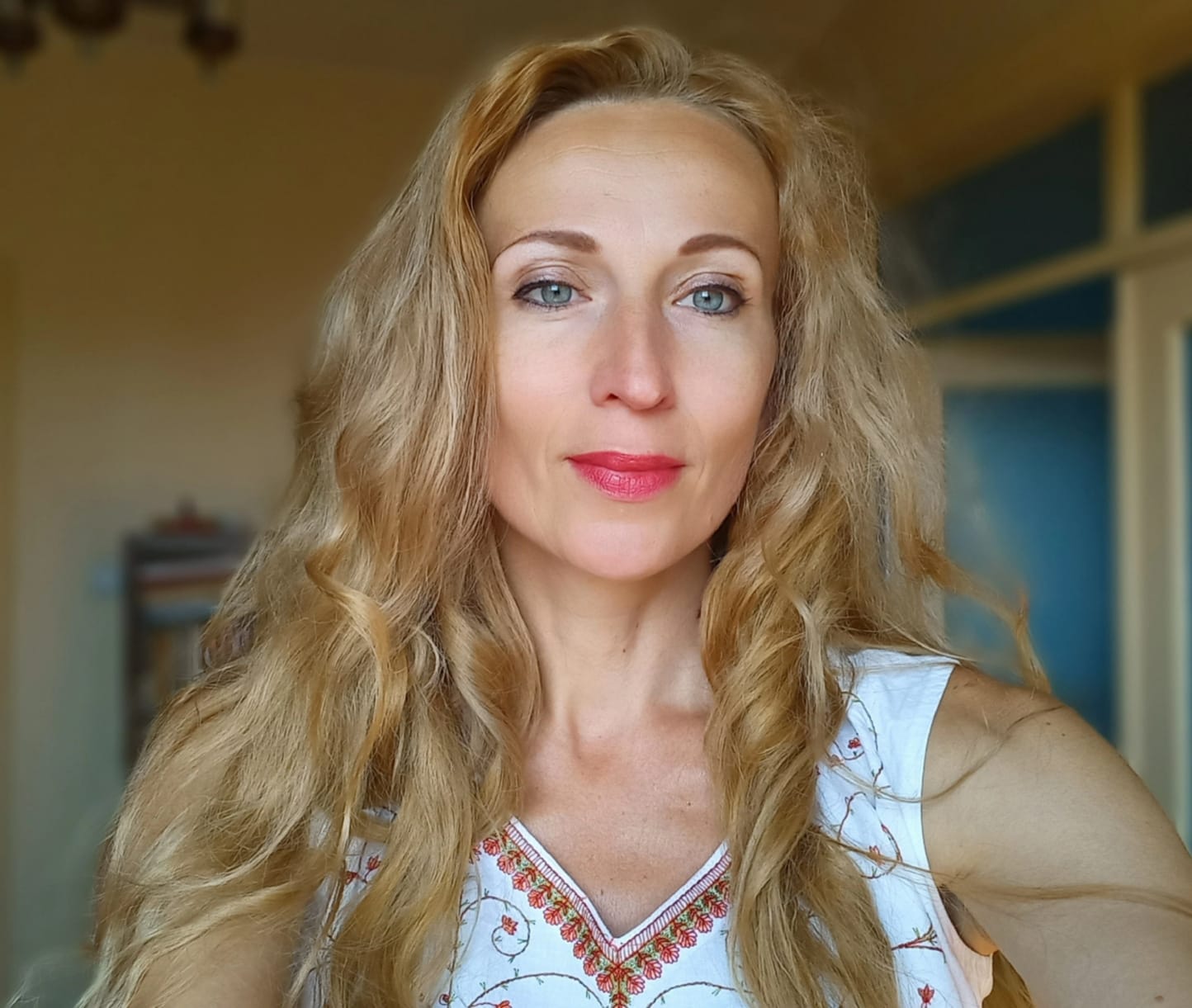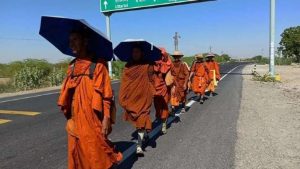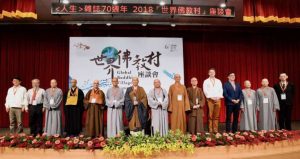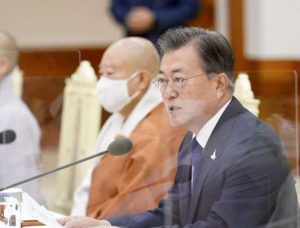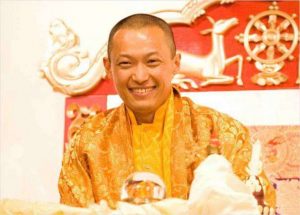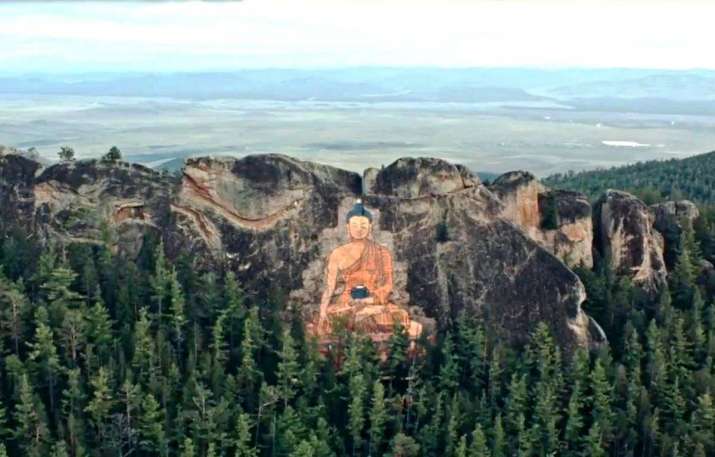
The largest image of Shakyamuni Buddha in Russia can be seen in Buryatia, one of the Buddhist republics of the Russian Federation. It is depicted on Bayan-Khongor Rock near the village of Bayan Gol in Khorinsky District—an administrative and municipal district, one of the 21 in the Russian republic, located at its center. After the creation of the image in 2016, the region became a popular center for tourists and pilgrims.
Bayan-Khongor Rock has been considered a sacred place by the Khorinsky Buryats since time immemorial. The inhabitants of Bayan Gol gather at the sacred rock twice a year— once in the summer and once on the second day of Sagaalgan (from Buryat language, “White Month”), on the Buryat New Year, usually celebrated in February according to the lunar calendar. Numerous munkhan (small chapels) have been established around the rock. Traditionally small sanctuaries contain images of burkhan (Buddhist deities), khurde (prayer drums), lamps, and other items. In 2015, a statue of Buddha and three stupas appeared in the area.
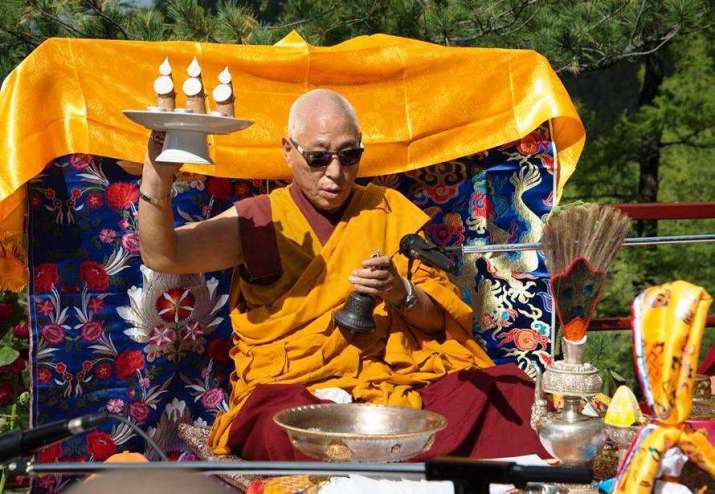
The idea for the Buddha image came from the local residents. They asked the senior Tibetan teacher Venerable Yelo Rinpoche, also known as Yeshe Lodoy Rinpoche, for help, as he had harbored the same dream for a long time.
The eminent Gelug teacher was born in Tibet, where he was recognized as the fourth incarnation of Yelo Rinpoche, and joined Drepung Gomang Monastery, part of the Gelug school of Tibetan Buddhism. In 1959 he traveled to India where, in 1963, he undertook the vows of a fully ordained Buddhist monk (Tib: gelong) from His Holiness the Dalai Lama. Following the advice of His Holiness, Yelo Rinpoche moved to Buryatia in 1993 and established the Tibetan Buddhist center Datsan Rinpoche Bagsha in Lysaya Gora, one of the highest and most picturesque places in the capital Ulan Ude.The root master of Yelo Rinpoche, Dulva Hambo Thupten Chokyi Nyima, was from Buryatia, which defined his karmic connection with the Siberian land.
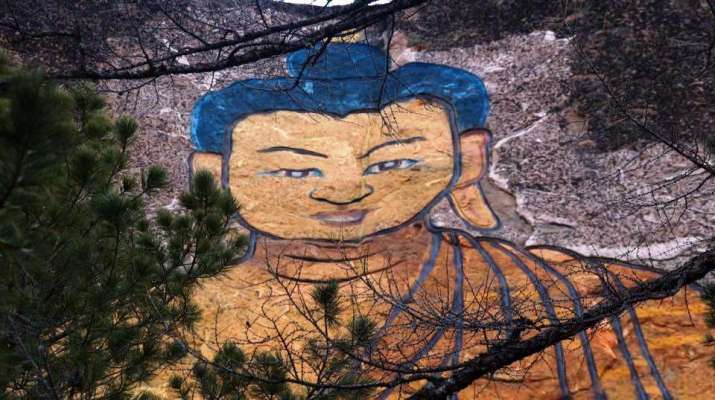
The image of Shakyamuni Buddha was executed with minimal impact on the natural environment. It is not fully carved; only the top layer of rock was removed to express the contours of the figure. The Buddha is depicted wearing traditional monastic robes, with legs crossed in the lotus posture. His right hand is pendant in the gesture of enlightenment, the bhumisparsha mudra (Earth-witness mudra), while his left hand depicts the dhyana mudra (gesture of meditation), holding an alms bowl.
The figure is 33 meters high as the number 33 is considered sacred in Buddhism. It is related to Trayastrimsa heaven, the celestial dimension of 33 devas (gods). The gods who live in the second of the six heavens of Buddhist cosmology number far more, but the number 33 is inherited from Vedic numerology, implying the idea of the full pantheon of gods. Shakyamuni Buddha ascended to Trayastrimsa heaven to give teachings for the benefit of the living gods there and to his mother Maya Devi, who was reborn there after her death.
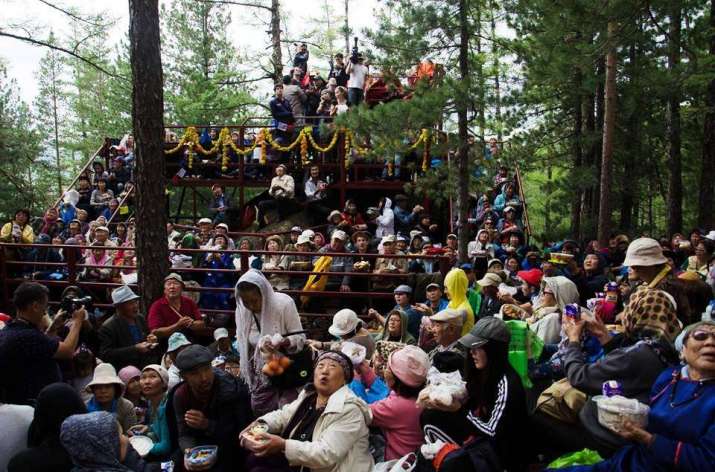
In an interview with Infopol, the attendant of Yelo Rinpoche, Tenzin Lama, explained the profound meaning of the Buddha image, stating: “Buddhist shrines, such as temples, stupas, and statues, are usually built facing south. However, we consciously wanted to move a little away from this tradition and direct the face of the Buddha toward Moscow and other large Russian cities. In such a difficult time, it was necessary to do so for the benefit of the whole country and all living beings. At all times, the creation of an image or temple of the Buddha is considered a very beneficial act. In places where they appear, everything becomes harmonious. All sorts of natural cataclysms cease, and mutual understanding comes in people’s relations. There are fewer sick people and fewer deaths from accidents. Living beings find peace and tranquility.”
On 10 September 2016, Yelo Rinpoche and other lamas from Datsan Rinpoche Bagsha conducted a ritual of consecration (Tib: rabne) of the unique image. Afterwards, a concert of several musical groups and a competition in the national sports of wrestling, jumping, and archery were held.
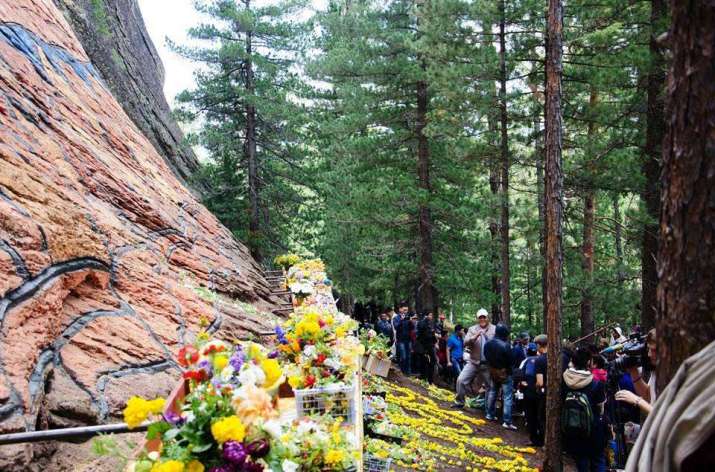
Some 4,000 pilgrims from different parts of Buryatia, and several large cities of Russia, attended this historical event. At the end of the ritual, the lamas and pilgrims offered 1 million flowers to the image of the Buddha. Flowers, white food items, sweets, fruits, and candles are a traditional offering in Buddhism. The richer and more beautiful the offerings, the more merit is accumulated. Great merit is also accumulated when an image of the Buddha is created, especially large images—the virtue of this act is incomparable.
See more
33-метрового Будду высекли в скале для защиты России (InfoPol)


